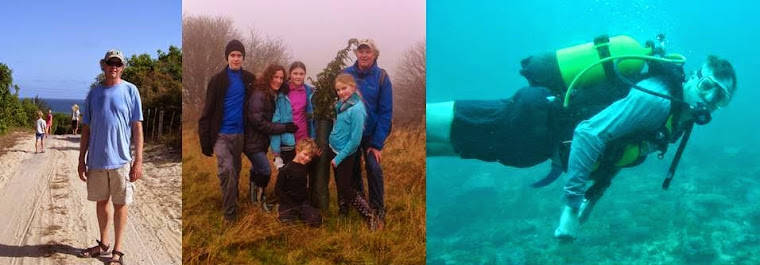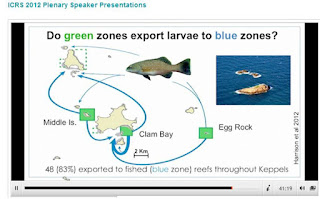I was recently listening
in on the plenary presentations at the 12th International Coral Reef
Syposium (www.ICRS2012.com). Professor
Geoffrey Jones of James Cook University gave a talk on larval fish connectivity
which caught my eye. This is a huge issue for coral reef fish. Most fish
release their eggs into the water and they may spend days or up to several
months floating around in the water with increasing ability to swim. Where do
they go? Take groupers as an example. If they spawn in a particular area, do
the larval fish settle into that same area? Do they go long distances and
repopulate other areas? One of the arguments in favour of marine protected
areas (MPAs), those areas where fishing is prohibited, is that the fish inside
the reserve are larger and more abundant, producing eggs and larvae that
repopulate the surrounding areas that can be fished. Thus while MPAs decrease
the fishable area they are theorised to export larvae to the surrounding fished
areas, making up for the decrease in fishable area. Prof. Jones and colleauges
used a number of techniques for trying to solve this dilemma, including
genetically identifying parents and juveniles.
They studied a coral
trout species in Australia. In this area there are green zones (MPAs) and blue
zones (areas where you can fish). Coral trout were more abundant in the MPAs
than outside. They identified the offspring of coral trout found in the MPA and
found that 83% of these were in fishable areas. Looking at the data another
way, they found that though the MPA was only 28% of the local area, 57% of
juveniles they sampled could be traced back to parents that resided in the MPA.
So these MPAs were
indeed supplying fish to the surrounding area. In another blog post I commented
on grouper in Watamu Marine National Park. There are also implications of the
above study for this same park. Even though this area is closed to fishing, it
is very likely that this is a major source of fish larvae to other parts of
Watamu and beyond. In fact, some grouper larvae are known to be found 10s, if
not a 100, kilometres from the parent population. The abundance in Watamu
Marine Park is being exported to local communities through the currents,
providing a source of nutrition for families along the coast.That is good news.

